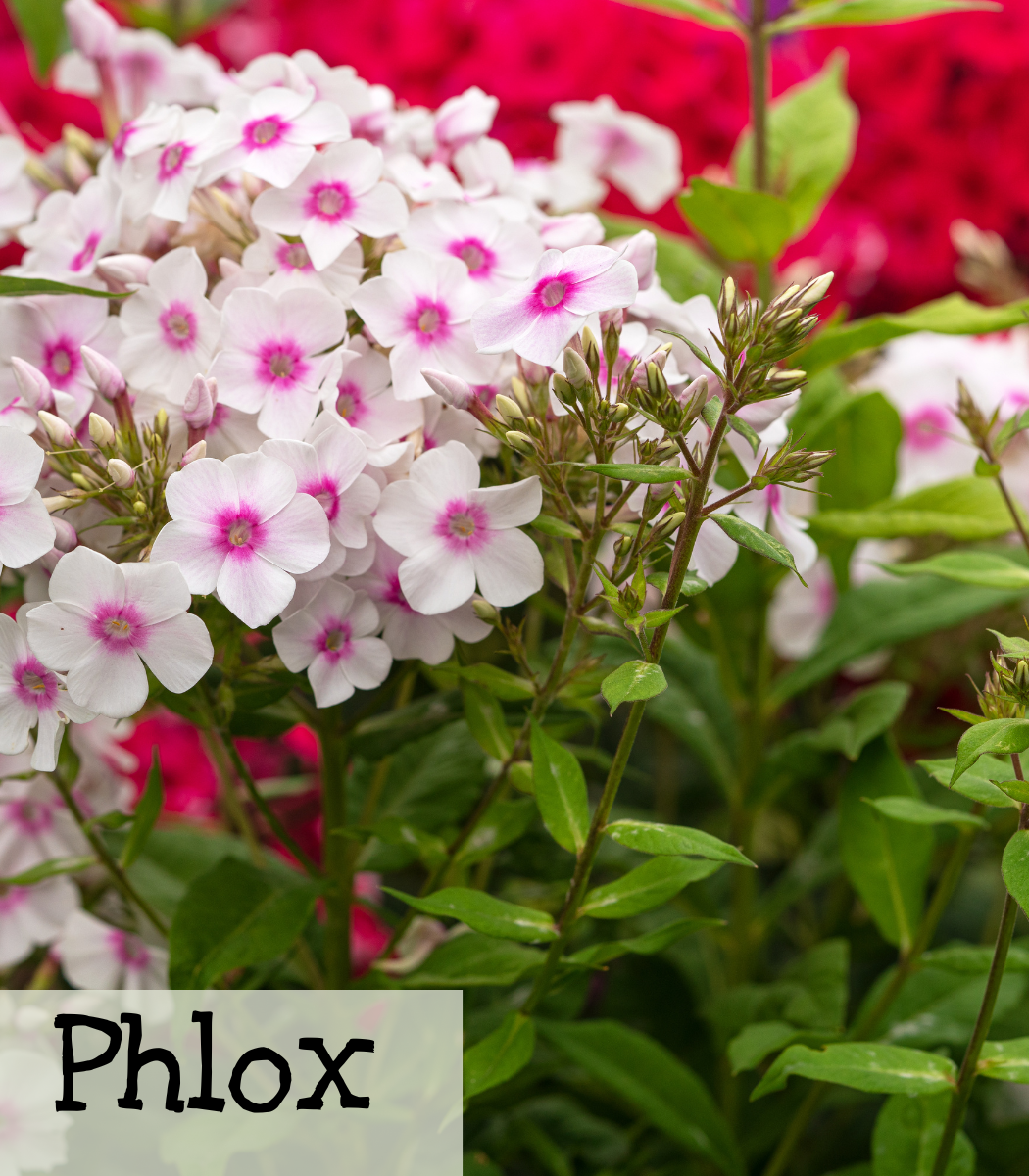
Phlox
Phlox drummondii is a native plant for much of the south. The flowers are rich in nectar and will attract many pollinators including bees and hummingbirds.
|
Cherry Caramel; Red Drummond; Sugar Stars |
|
Phlox drummondii |
|
Difficult |
|
Intermediate |
|
3 years if properly stored |
|
Annual |
|
11-21 days |
|
None |
|
Surface Sow |
|
|
|
Seeds need light to germinate Full sun |
|
|
|
March |
|
Yes |

Growing Tips
 for GA
for GA


Phlox drummondii is native to much of the south, including GA.
When to Start
Start indoors: 6-8 weeks before the last frost date. (Mid-March for GA.)
Transplant: After the danger of frost has passed. (May 1 for Jefferson, GA)
Direct Sow: After the danger of frost has passed. (May 1 for Jefferson, GA)
How to Start
Start indoors 6-8 weeks before the last frost date. Phlox seeds need light to germinate. Surface sow into seed cells by gently pressing them into the seed starting mix and place them under grow lights. Transplant after hardening off and all danger of frost has passed. Or direct sow after the danger of frost has passed. Gently press the seeds into the soil or barely cover with soil to keep the seeds from blowing away. Keep the soil moist but not soggy throughout the germination process.
Care
Plant in full sun in moist, well-draining soil. Space the seedlings 18-24 inches to give good air circulation to reduce powdery mildew. Bottom watering will also help keep foliage dry, which will in turn, help prevent powdery mildew. Mulch, not just to suppress weeds, but to maintain soil moisture and to help keep the soil cooler.
Growing hardy garden phlox is difficult in hot, humid areas because the plant is sensitive to powdery mildew. Watch for foliage that looks as though it has been dusted with talcum powder, and pinch off the affected leaves. However, it is easy to grow in lower-humidity regions.
Dead-head plant to encourage more blossoms until you are ready for it to go to seed.
Seed Saving

Isolation Distance
Insect dependent for pollination. Isolate 1/2 mile to prevent cross-pollination.
Instructions
Select healthy, robust plants free of any signs of disease or insect infestation for seeds. Seeds carry the traits of the parent plant. Choose plants that exhibit the traits you wish to preserve. Consider bloom size, color, and shape, as well as blooming time.
Allow the biggest and healthiest blooms to mature on the plant. Cover the seed head with a fine-mesh bag as soon as the flower petals shrivel and die. Use an elastic band to hold the bag in place. This prevents seeds from spilling onto the soil before harvest.
Clip the flower head from the main stem once the seeds are dry and dark. Separate plant debris from the seeds by removing the mesh bag and placing the flower head in a paper bag and shaking to loosen the seeds. Seeds settle to the bottom of the bag. Remove plant debris by hand.
Features
- Attracts pollinators
- Attracts hummingbirds
- Deer resistant
- Good ground cover
- Container friendly
- Easy to grow (in lower humidity regions)
- Cherry Caramel: Annual phlox produces a unique color combination and abundant blooms on branched stems.
- Red Drummond: Heirloom, GA native plant. Named after Thomas Drummond, who sent seeds from Texas to England in 1835. Clusters of 1 in. magenta-red flowers with burgundy centers and pale pink undersides are very attractive to pollinators and hummingbirds. Very hardy–blooms survive down to at least 20°F.
- Sugar Stars: Heirloom, GA native plant. Fragrant blooms in an unusual range of colors for a Phlox—pale lavender to deep violet blue. Bushy plants are good in mass plantings, borders, and as cut flowers. Good for pollinators and hummingbirds.

To get the maximum height from tall garden phlox, clip the weakest stems from the plant when they are about 6 inches tall, leaving only five or six stems on the plant. Pinch out the tips of the remaining stems to encourage a tall, bushy growth habit.
